 Evolution
Evolution
 Intelligent Design
Intelligent Design
Top Science Stories for 2008 Leave out Darwin but Point to Intelligent Design
At the beginning of 2008, the U.S. National Academy of Sciences stated in its booklet Science, Evolution, and Creationism, that “Evolutionary biology has been and continues to be a cornerstone of modern science.” It seems that their assertion did not pan out very well for the rest of 2008. Two groups recently released lists of top science news stories and breakthroughs for 2008: The Access Research Network and the leading journal, Science. None of their top breakthroughs came as a result of evolutionary biology.
Science‘s top breakthrough was a method where scientists discovered how to harvest stem cells from living patients, a find which has huge potential for treating diseases. This is an extremely important scientific breakthrough, to be sure, but it has nothing to do with evolutionary biology. In fact, their press release states that “if scientists can master cellular reprogramming so that it’s more finely controlled, efficient and safe, patients may someday be treated with healthy versions of their own cells.” Keep in mind that in their view, researchers are simply “reprogramming” an entity that arose via blind and unguided processes. In fact, the main article in Science was titled “Reprogramming cells,” but the mere fact that cells can be “programmed” and “reprogrammed” does not point to an unguided, unintelligent origin. The article even admits that researchers do not fully understand how the reprogramming takes place: “Although dozens of labs have used the technique, what is happening inside the reprogrammed cell remains a mystery.” Though Science would never admit it, their top story of 2008 shows that scientists are studying cells by treating them as if they run on software programs which can control the physical form, and input/ouput of the cellular hardware. They’re trying to “master” a programming system they don’t even fully understand, yet they believe that it all arose via unguided and blind natural processes. It seems that any progress that is being made in this field results from scientists treating cells as if they were designed.
It’s also worth noting that none of Science‘s 10 “runner up” scientific breakthroughs for 2008 were from evolutionary biology. Their other top scientific breakthroughs dealt with fascinating scientific topics, ranging from detecting extrasolar planets to understanding why some cells turn cancerous to finding methods to new ways to generate electricity using water, but none dealt with evolutionary biology.
Access Research Network’s Top 10 Science News Stories for 2008 also show — though in a more explicit fashion — that it is becoming harder to do good science without intelligent design (ID) and that old notions of evolution are failing. ARN’s top news story was the summer meeting of the Altenberg 16, a conference of scientists “who recognize that the theory of evolution which most practicing biologists accept and which is taught in classrooms today, is inadequate in explaining our existence.” ARN’s other runner-up top science news stories for 2008 included atheists and agnostics who are increasingly defending ID, the release of Stylus by the Biologic Institute as an improved method of using computers to simulate evolution, the molecular clutch discovered in flagella, and leading biologists marveling at the irreducible complexity of the ribosome. ARN also recognized the increasing reliance that engineers are making upon biomimetics — where engineers mimic nature to improve technology. According to ARN, “Design-based methodologies in biomimetics are yielding tangible results.”
(ARN also released a list of Top 10 Darwin and Design Resources for 2008, which includes Expelled, the video game Spore, David Berlinski’s The Devil’s Delusion, Salvo Magazine‘s issue on ID, Intelligent Design 101 and its rebuttal to Francis Collins by me and Logan Gage, and William Dembski and Sean McDowell’s new book Understanding Intelligent Design.)
With 2009 being the bicentennial anniversary of Darwin’s birth, undoubtedly Darwinists will seek to make a big push next year to promote the glories of Darwinian evolution. But if 2008 was any indication, it seems quite possible to do good science without neo-Darwinian evolution. As National Academy of Sciences member Phil Skell wrote in The Scientist in 2005:
Darwinian evolution — whatever its other virtues — does not provide a fruitful heuristic in experimental biology. This becomes especially clear when we compare it with a heuristic framework such as the atomic model, which opens up structural chemistry and leads to advances in the synthesis of a multitude of new molecules of practical benefit. None of this demonstrates that Darwinism is false. It does, however, mean that the claim that it is the cornerstone of modern experimental biology will be met with quiet skepticism from a growing number of scientists in fields where theories actually do serve as cornerstones for tangible breakthroughs.
It will be interesting to see whether next year’s scientific breakthroughs actually come as a result of scientists employing the principles behind Darwinian evolution, or those behind intelligent design.
